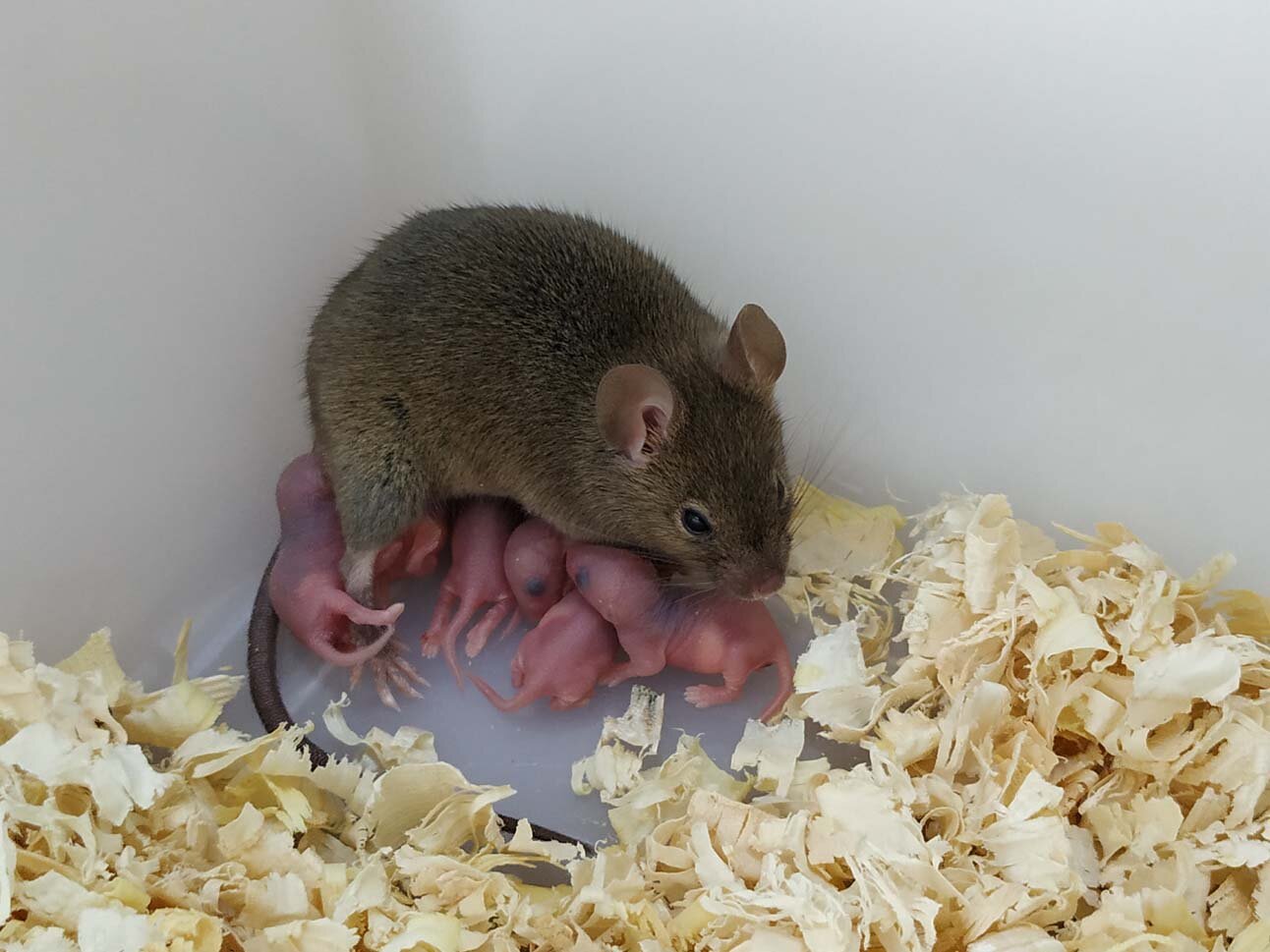博文
中美科学家由单个未受精卵孕育出哺乳动物后代
 精选
精选
||
中美科学家由单个未受精卵孕育出哺乳动物后代
诸平
据物理学家组织网(phys.org)2022年3月8日报道,中国上海交大(Shanghai Jiao Tong University)、中科院动物研究所( Institute of Zoology, Chinese Academy of Sciences)、上海市辅助生殖与生殖遗传学重点实验室(Shanghai Key Laboratory for Assisted Reproduction and Reproductive Genetics)的科学家与美国加州大学(University of California)的科学家联合利用单个未受精卵孕育出哺乳动物后代(Mammalian offspring derived from a single unfertilized egg)。上述图片就是孤雌生殖的老鼠及其后代。单性生殖小鼠是通过对多个印迹控制区进行定向表观遗传重写而产生的。孤雌生殖的小鼠成年后表现出正常的生殖性能。
一个由中国几家机构和美国一家机构的研究人员组成的研究团队,已经成功地从一只老鼠体内一个未受精的哺乳动物卵子中培育出后代。相关研究结果于2022年3月7日已经在《美国国家科学院院刊》(Proceedings of the National Academy of Sciences简称PNAS) 杂志网站发表——Yanchang Wei, Cai-Rong Yang,Zhen-Ao Zhao. Viable offspring derived from single unfertilized mammalian oocytes. PNAS, 2022, 119(12): e2115248119. DOI: 10.1073/pnas.2115248119. Published on March 7, 2022. https://www.pnas.org/doi/10.1073/pnas.2115248119
在该论文中,研究小组描述了他们在老鼠身上进行的技术测试。
单性生殖是由一个未受精卵发育成的胚胎。在自然界中,它发生在蚜虫、鱼、爬行动物、蝎子、螨虫和一些蜜蜂中,但不发生在哺乳动物中。在哺乳动物中,有性繁殖(sexual reproduction )涉及到雄性DNA和雌性DNA的融合,由此产生的后代具有来自父母双方的遗传物质。此前的研究表明,哺乳动物的大多数细胞都能复制来自父母双方的基因,但也有少数细胞不能,而是只表达来自母亲或父亲的基因(genes)。在他们的工作中,研究人员利用了这些例外。
研究人员指出,由于基因组印迹的原因,先前旨在迫使哺乳动物孤雌生殖的研究工作已经失败。他们采用了一种不同的方法来克服这个问题。他们的工作包括从老鼠体内取出一个卵子,然后使用CRISPR编辑其基因,以模仿雄性父母在正常受精过程中可能贡献的基因。然后,他们在卵子中注射一种酶,打开一些基因,关闭另一些基因,使卵子中的基因类似于由父亲受精的卵子中的基因。然后卵子被植入雌鼠的子宫,在那里它被允许成长为一个胎儿。研究人员用几个卵子(eggs)重复了这一过程,将它们一起植入一只老鼠的子宫,通常老鼠一次生育8到12只幼崽。所有的幼崽都活了下来,但只有一只活到成年,而且它的表现足够好,也能生育后代。
研究人员认为哺乳动物的孤雌生殖是可以实现的,尽管他们承认在实际应用之前还有很多工作要做。他们进一步建议,对这一过程的改进可能会导致在农业或医药开发中的应用。
上述介绍,仅供参考。欲了解更多信息,敬请注意浏览原文或者相关报道。
Mouse pups with same-sex parents born in China using stem cells and gene editing
In mammals, parthenogenesis is limited because of problems arising from genomic imprinting. Here, we report live mammalian offspring derived from single unfertilized eggs. This was achieved by the targeted DNA methylation rewriting of seven imprinting control regions. By designing guide RNAs with protospacer adjacent motif (PAM) sequences matching one allele but not the other, dCas9-Dnmt3a or dCpf1-Tet1 enables targeted DNA methylation editing in an allele-specific manner. The success of parthenogenesis in mammals opens many opportunities in agriculture, research, and medicine.
In mammals, a new life starts with the fusion of an oocyte and a sperm cell. Parthenogenesis, a way of generating offspring solely from female gametes, is limited because of problems arising from genomic imprinting. Here, we report live mammalian offspring derived from single unfertilized oocytes, which was achieved by targeted DNA methylation rewriting of seven imprinting control regions. Oocyte coinjection of catalytically inactive Cas9 (dCas9)-Dnmt3a or dCpf1-Tet1 messenger RNA (mRNA) with single-guide RNAs (sgRNAs) targeting specific regions induced de novo methylation or demethylation, respectively, of the targeted region. Following parthenogenetic activation, these edited regions showed maintenance of methylation as naturally established regions during early preimplantation development. The transfer of modified parthenogenetic embryos into foster mothers resulted in significantly extended development and finally in the generation of viable full-term offspring. These data demonstrate that parthenogenesis can be achieved by targeted epigenetic rewriting of multiple critical imprinting control regions.
https://m.sciencenet.cn/blog-212210-1328735.html
上一篇:[转载]杨六省:美国《数学教育研究杂志》的退稿理由让我无语
下一篇:科学家在剪切流Z箍缩装置中证实了热核聚变
